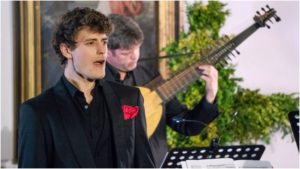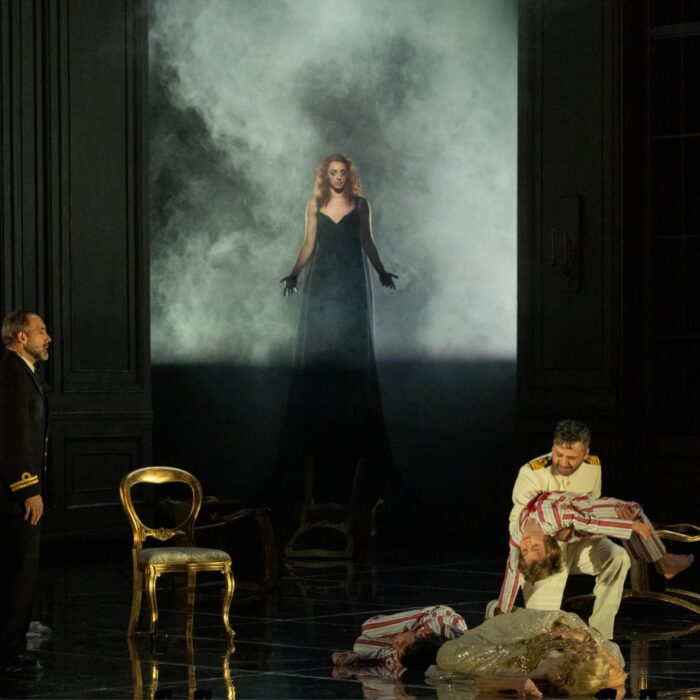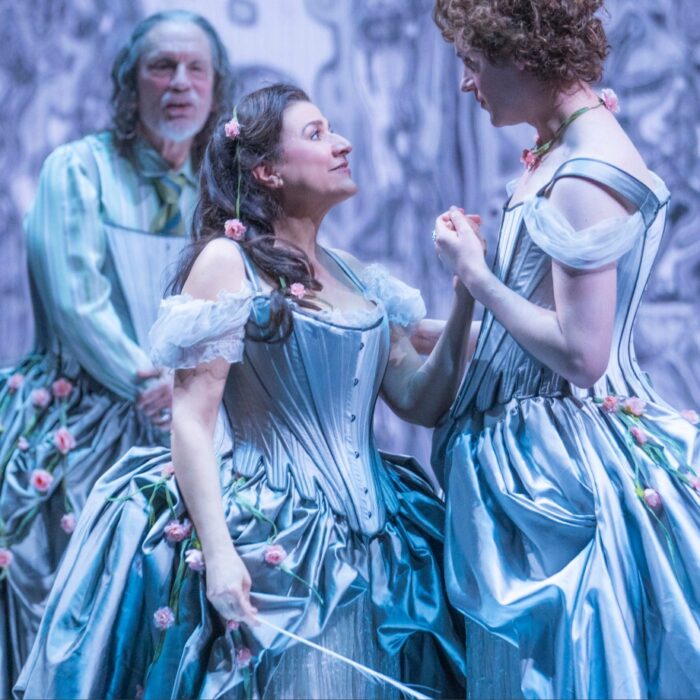
Usedomer Musik Festival 2018 Review – Jakub Jósef Orliński Gives a Bravura Baroque Recital Minus Bboy Boomerangs
By Jonathan SutherlandThe remote Baltic coast of Mecklenburg-Vorpommern might seem a strange place for a Music Festival, but for 25 years the island of Usedom has been hosting artists of international repute. Skeptical foreign visitors expecting bleak windswept dunes with a few forlorn fishermen’s shanties shrouded in eau de poisson will be in for a big surprise.
Usedom’s popularity reached its apogee during the time of Kaiser Wilhelm II, who like his grandmother Queen Victoria, was extremely fond of invigorating seaside towns. Whilst Victoria RI opted for Brighton or the Isle of Wight, her bellicose German offspring chose one of the most convenient coasts to Berlin for his R&R. Not only was Usedom celebrated for its energizing sea air, it was also surprisingly sunny and still has one of the highest solar hour averages in the Bundesrepublik. Obviously wherever the Kaiser went, so did an entourage of aristocratic hangers-on and a large number of palatial villas were built in and around Heringsdorf, Ahlbeck, and Bansin, which became known as the “Dreikaiserbäder” or “Three Imperial Baths” towns. For those with high social aspirations but fewer Thalers in their Geldbörsen, rental accommodation in these recherché watering holes became available as early as 1825 and seems the preferred form of latter-day lodging. Voyageurs of the more sybaritic ilk will be well-satisfied by grande luxe hotels such as the Seetelhotel Ahlbecker Hof, which still boats royal patronage or the Steigenberg Grandhotel and Spa in Heringsdorf, but visitors of all niveaux should have no fears of being billeted in blustery bivouacs or incommodious campervans.
A Star on the Rise
The Usedom Music Festival proper doesn’t start until September 22 but as a kind of musical appetizer presented a memorable concert by young rising-comet Polish countertenor Jakub Jósef Orliński with seven members of the acclaimed Il Pomo d’Oro ensemble, presumably transmuted into “Il Pomodorino d’Oro”. Still only 25, Orliński, is fast becoming one of the most sought-after countertenors in the world. Contrary to many singers with more than a soupçon of avoirdupois, Orliński is also a prize-winning break dancer who combines Cirque du Soleil physicality with consummate musicianship – every opera director’s dream artist. He enjoyed rave reviews last year for his performances of Orimeo in the Cavalli rarity “Erismena” at the Festival d’Aix-en-Provence and the title role of “Rinaldo” in Frankfurt. A tour in March this year with Harry Bickett and the English Concert as Eustazio in “Rinaldo” received unanimous critical acclaim in Madrid, London, and New York. In this relatively short recital, it was clear why Orliński is creating the biggest buzz in baroque music – and not just for his optional Bboy boomerangs.
Lutheran places of worship generally avoid the panoply of gilded seraphim and chubby cherubim which characterize rococo Catholic churches, but their big advantage is that the relative architectural austerity encourages good acoustics. In this respect, the Evangelische Kirche Seebad Ahlbeck did not disappoint and the balance between the gifted musicians and star counter-tenor was ideal.
Starting with Fago
The name Francesco Nicola Fago would probably raise quizzical eyebrows in Acquaviva delle Fonti, let alone Ahlbeck. The 18th-century composer was born in Taranto in Puglia, which is infamous for its demented “tarantella” dance and more recently, fatal toxicity levels. Other than a few operas and some comedies, “Il Tarantino” is probably best remembered as the teacher of Leonardo Leo and also his long-lived son Lorenzo Fago (1704-1793). In the cornucopia of early Barque composers, Fago is far from the brightest star in the firmament, so it was no small feat of musical scholarship on the part of Orliński and his researcher, Yannis Francois, to unearth the aria “Tam non splendet.” Its musical obscurity may be unwarranted but it served to exhibit Orliński’s immaculate breath control, refined phrasing and fascinating palette of vocal colors.
There was a brief instrumental piece for the Little Golden Apples by Pietro Antonio Locatelli called “Lamento funebre,” which displayed some fine violin playing by Zefira Valova and Anne Kaun with nifty cembalo work by the ensemble’s leader Maxim Emelyanychev.
On To Vivaldi
Orliński continued with music by the composer with whom he is becoming particularly associated, Antonio Vivaldi. For the Usedom concert, he chose the moving “Cum dederit” from the motet “Nisi Dominus.” This is a piece with a slow lilt and minor key melancholy, which again revealed the young countertenor’s remarkable breath control over long phrases, as well as a highly sensitive capacity for word coloring. Evenness of tone on several sustained middle-register notes was impeccable. Crescendo scales were well measured and trills unforced and pristine.
And Handel
After a short interval, the mood changed dramatically with an emotionally-charged interpretation of Arsace’s “Furibondo spira il vento” from one of Handel’s rare comic operas “Partenope”. There was plenty of brisk Baltic breeze in Orliński’s vigorous account and his characterization of the fickle Prince of Corinth was similarly blustery. Rapid semiquaver roulades were crisp and fluid with hefty chest notes on the low B naturals. The da capo was even more emphatic. The frantic 6/8 instrumental scales were executed con fuoco by violins with some pungent lower string playing by Ludovico Minasi and Grigory Krotenko.
Handel’s opera “Tolomeo re d’Egitto” is not exactly a prototype of “Aida” as it is actually set in Cyprus and requires far fewer slaves, priests or elephants. With confused identities, potential fratricide, endless unrequited love triangles, and an implausibly happy-ending, the plot is infinitely more confusing than any Verdi proto-Egyptian odyssey. Avoiding the more familiar “Non lo diro’ col labbro” aria, Orliński opted for the “che piu si tarda” recitative in which he displayed outstanding word painting with impeccable diction, ably accompanied by the cembalo continuo of Maxim Emelyanchev. There was biting string marcati before “Inumano fratel” and really beautiful vocalization on “Ma tu, consorte amata,” with a fine diminuendo rallentando at “mandi un sospiro” before the detached articulated string accompaniment to the “Stille amare, già vi sento” aria. “La morte chiamar” and the repeated “già’s” in “già vi sento smorzare il tormento” were deeply heartfelt.
Although Johann Adolph Hasse was once described as “il padre della musica” he seems to have suffered the same descent into obscurity as “Il Tarantino”. Il Pomo d’Oro revitalized his Fuga & Grave in G Minor as an instrumental interlude but ideally needed more apples on the musical tree to do justice to the deeper sonorities of this original score.
Handel wrote “Agrippina” at the age of 24, which is close to the age Jakub Jósef Orliński is now. Most Handel scholars consider it his first masterpiece. Ottone’s aria “Voi che udite il mio lamento” was written for the relatively limited tessitura of Francesca Vanini-Boschi, but its technical demands center on long phrases and extended breath control. As commander of the Imperial army falsely accused of treason, snubbed by the Emperor, Poppea, Nero and worse, the diabolical Agrippina, Ottone is not a happy chappy. Orliński managed to convey the despair of the aria with affecting pathos and a plangent amber timbre. Lying lower than his earlier selections, there were fabulous chest notes joined with seamless legato. “Ahi che perderlo è tormento che disanima il mio cor,” for example, had a rich contralto-ish sonority. Unfortunately, the accompaniment lacked the necessary plaintive oboe obbligato.
Misery and despair gave way to bravura fireworks and fiendlish fioratura in “A dispetto d’in volto ingrate,” from Handel’s “Tamerlano.” Spectacular leaps, runs, scales, and roulades were all immaculately executed with commendably clear diction. The sudden drops to low chest notes were refulgent and reminiscent of Marilyn Horne in her plummy prime. The stratospheric da capo cadenzas were electrifying. Maxim Emelyanychev and Il Pomo d’Oro are no strangers to “Tamerlano,” having performed the complete opera at both the Barbican and the Amsterdam Concertgebouw in 2015, but similar to the Hasse, the reduced instrumental forces in Ahlbeck were regrettable.
And an Unforgettable Encore
A YouTube clip of Orliński singing “Vedro con mio diletto” from Vivaldi’s opera “Il Giustino” in Aix-en-Provence has had more than 2.5 million hits. The al fresco, très décontracté ambiance of a handsome young performer in casual open shirt, sporty shorts and trainers singing music written nearly 300 years ago even appealed to the mutable MTV generation. In any case, “Vedro con mio diletto” was a fitting encore to an exceptional recital. There was elegant elation on “Il core del mio cor pien di contento” and “Sospirerò penando ogni momento” had gentle wistfulness. Orliński’s ability to form a powerful crescendo without losing focus or tonal quality is quite remarkable and unlike other countertenors whose timbre often tends to monochrome if not metal, the young Polish singer has a scopic Picasso-esque range of colors in his vocal palate. Inherent musicianship, meticulous attention to the markings and sensitivity to the nuances of the text make Orliński one of today’s most gifted interpreters of baroque music – with or without the break dancing.
If the 25th Usedomer Musik Fetsival, which runs from 22nd September to 13th October continues to present concerts of this quality, there will be an influx to the “Dreikaiserbäder” on the Baltic even greater than the crowds who flocked after the Kaiser a hundred years ago.


